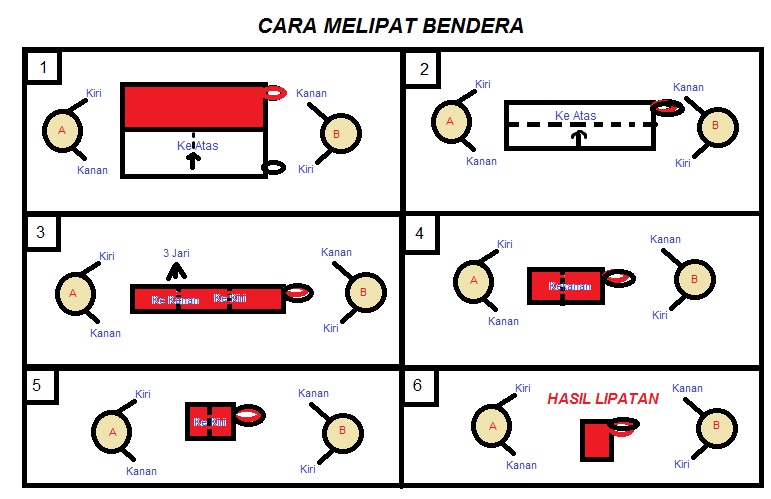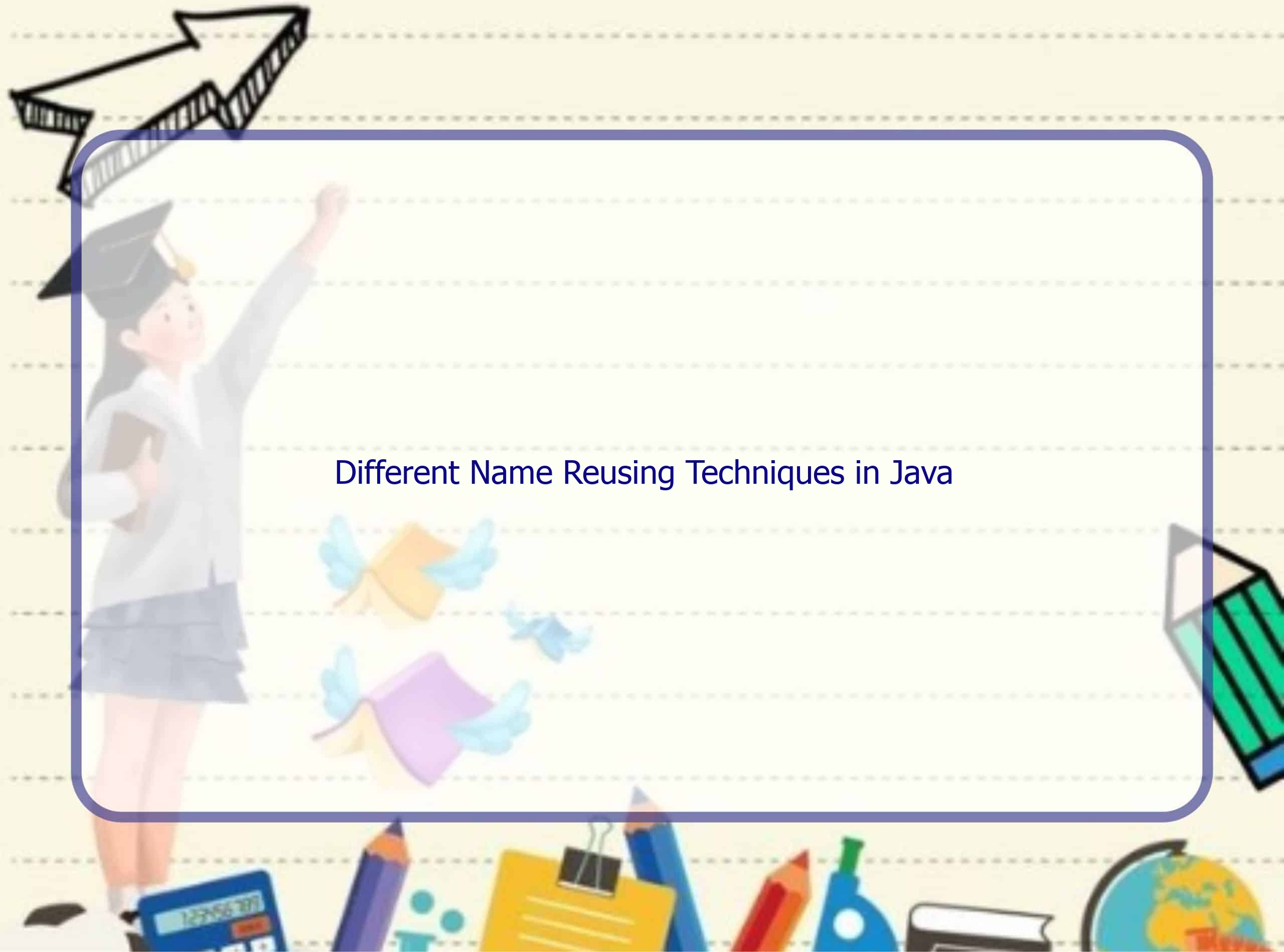Introduction
Welcome to Rintiksedu.id! Today, we will explore different name reusing techniques in Java. As someone experienced in the topic, I understand the importance of efficiently utilizing names in Java programming. In this article, I will guide you through the various techniques and their advantages and drawbacks. To get started, take a look at the eye-catching image below, showcasing the art of folding the Indonesian flag.

Method Overloading
Method overloading is a powerful technique in Java that allows multiple methods with the same name but different parameters. This provides flexibility in handling different types of data and performing various operations. By avoiding the need to come up with unique method names for similar functionality, code simplicity and readability are improved. Let’s dive into the details!
When applying method overloading, you can create multiple methods with the same name, differing either in the number or type of parameters. Java distinguishes between these methods based on their parameter types, allowing them to be called according to the parameters provided. This technique proves to be highly useful in scenarios where you need to perform similar operations on different data types.
Advantages of Method Overloading
Method overloading offers several advantages in Java programming:
- Code Flexibility: Method overloading enables you to handle multiple scenarios and diverse data types with a single method name. This simplifies code maintenance and enhances code reusability.
- Improved Readability: By consolidating similar operations under the same method name, your code becomes more organized and easier to understand. Developers don’t have to remember different method names for similar functionalities.
- Enhanced Developer Experience: Method overloading reduces the cognitive load on developers, allowing them to focus on the logic rather than inventing new method names for similar functionality.
Drawbacks of Method Overloading
While method overloading provides numerous benefits, it’s essential to consider its drawbacks:
- Potential Ambiguity: If the parameters are not well-defined or match multiple overloaded methods, the Java compiler can face difficulties in determining the correct method to invoke.
- Increased Complexity: As the number of overloaded methods grows, it can become challenging to track and understand different versions, leading to potential confusion and mistakes.
Method Overriding
In Java, method overriding is a technique that involves creating a new implementation for a method in a subclass that has the same name as a method in the superclass. This allows customization and specialization of behavior for specific subclasses, promoting code reusability and encapsulation. Let’s explore the intricacies of method overriding!
When you override a method, you provide a new implementation in a subclass that overrides the implementation of the same method in the superclass. By doing so, you can alter the behavior of the method for the specific subclass while still benefiting from the common functionalities provided by the superclass. This is a fundamental concept in object-oriented programming.
Advantages of Method Overriding
Method overriding offers several advantages in Java programming:
- Customization: Subclasses can modify the behavior of inherited methods to suit their specific requirements. This allows for fine-grained control over how methods operate and enables specialization.
- Polymorphism: Method overriding is a key feature enabling polymorphic behaviors in Java. It allows you to invoke methods based on the actual object type, even when the reference type is the superclass.
- Code Reusability: By overriding methods, you can reuse the general functionality provided by the superclass, reducing code duplication and promoting a more modular and maintainable codebase.
Drawbacks of Method Overriding
Despite the advantages, there are a few considerations to keep in mind when using method overriding:
- Inheritance Constraints: You can only override methods in subclasses that are inherited from superclasses. It isn’t possible to override methods defined in the same class or unrelated classes.
- Contractual Obligations: If method overriding alters the contract defined by the superclass method, it can lead to unexpected behavior and violate the principle of substitutability.
Variable Shadowing
In Java, variable shadowing occurs when a local variable has the same name as a variable in an outer scope. This allows hiding the outer variable within the local scope, reducing naming conflicts and providing a clear context for variables used within a limited scope. Let’s uncover the nuances of variable shadowing!
When you shadow a variable, the local variable takes precedence over the variable with the same name in an outer scope. In other words, the visibility of the outer variable is temporarily “shadowed” by the local variable within the specified scope. This technique helps to avoid naming conflicts and provides a more specific and precise context for the variable.
Advantages of Variable Shadowing
Variable shadowing offers several advantages in Java programming:
- Enhanced Clarity: By using variable shadowing, you can clearly indicate the scope and purpose of a variable. This improves code readability and facilitates easier debugging.
- Reduced Naming Conflicts: Variable shadowing eliminates concerns about naming conflicts between local variables and variables in the outer scope. This allows for more efficient and modular programming.
- Explicit Scope Control: By shadowing variables, you have precise control over where and how a variable is accessed. This reduces unintended modifications and increases code predictability.
Drawbacks of Variable Shadowing
While variable shadowing can be useful, it should be used carefully to avoid confusion and unintended consequences:
- Potential Confusion: When multiple variables share the same name, it can create ambiguity and make the code harder to understand. Overusing variable shadowing can lead to confusion among developers.
- Bug Introductions: If variable shadowing is not used judiciously, it can introduce subtle bugs. Assigning values to an unintended variable or mistakenly modifying the wrong variable are common pitfalls to watch out for.
Conclusion
In this article, we explored different name reusing techniques in Java, namely method overloading, method overriding, and variable shadowing. Method overloading allows the definition of multiple methods with the same name but different parameters, providing flexibility and simplifying code. Method overriding enables customization and specialization of behavior for specific subclasses, supporting polymorphism and code reusability. Variable shadowing allows hiding outer variables within local scopes, reducing naming conflicts and improving code clarity.
By understanding and correctly implementing these techniques, you can enhance code readability, maintainability, and flexibility in your Java programs. However, it’s crucial to avoid potential confusion and unintended consequences by using each technique judiciously. Keep in mind the advantages and drawbacks of each approach to make informed decisions in your programming projects. Happy coding!







